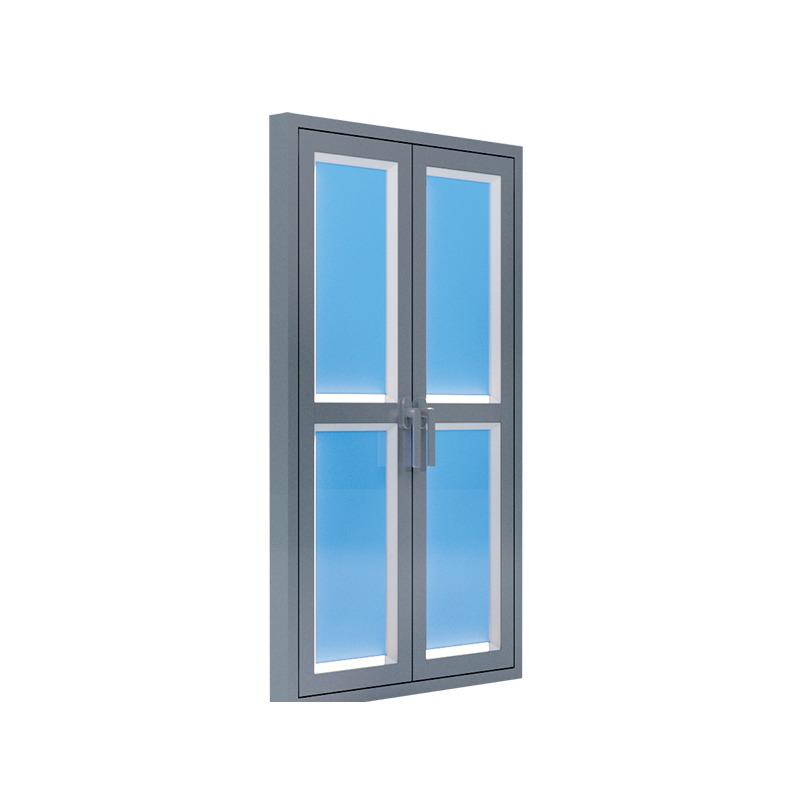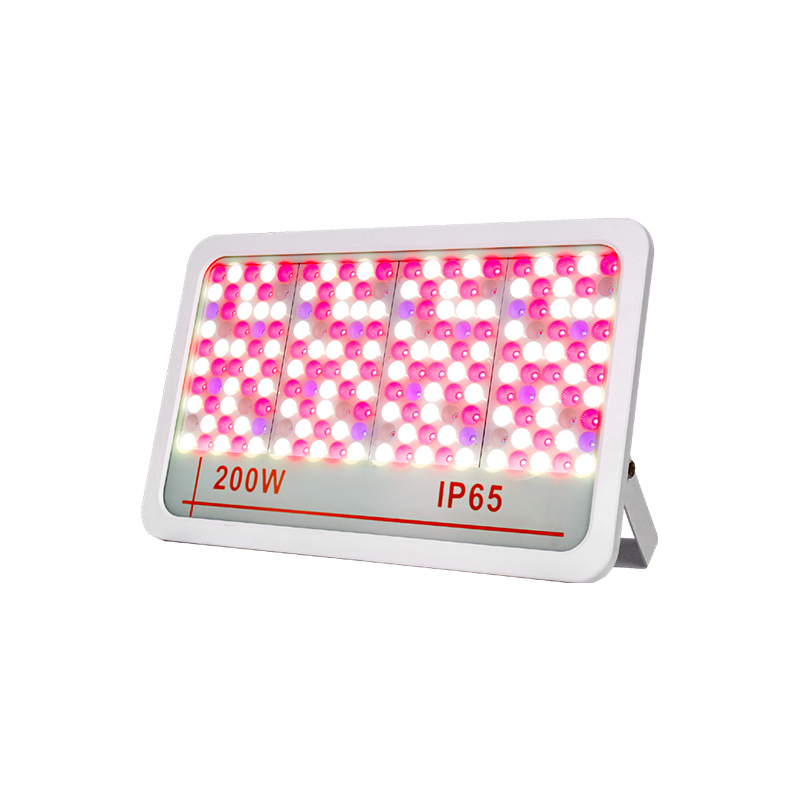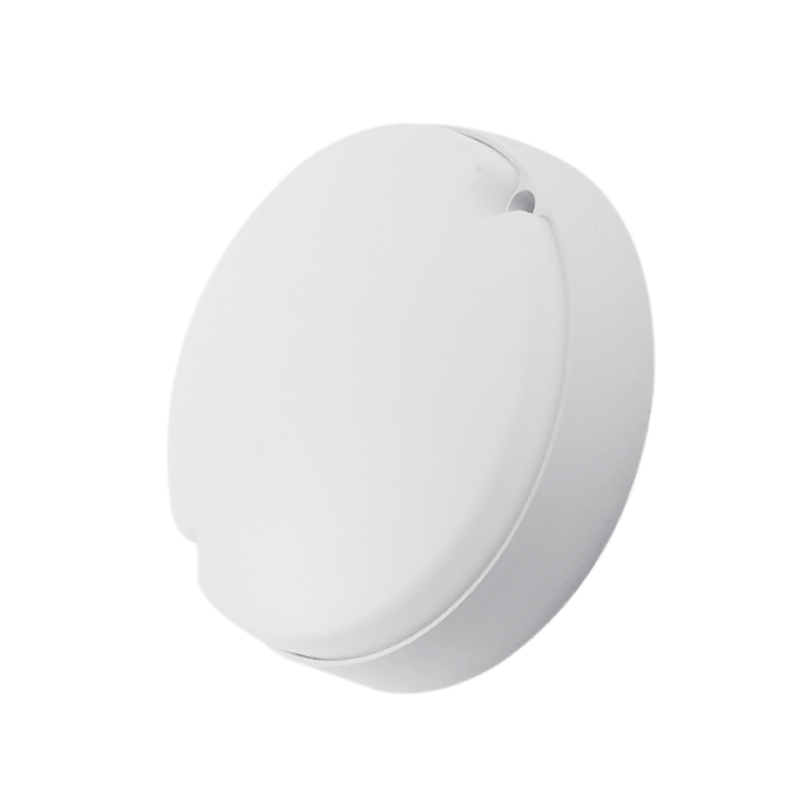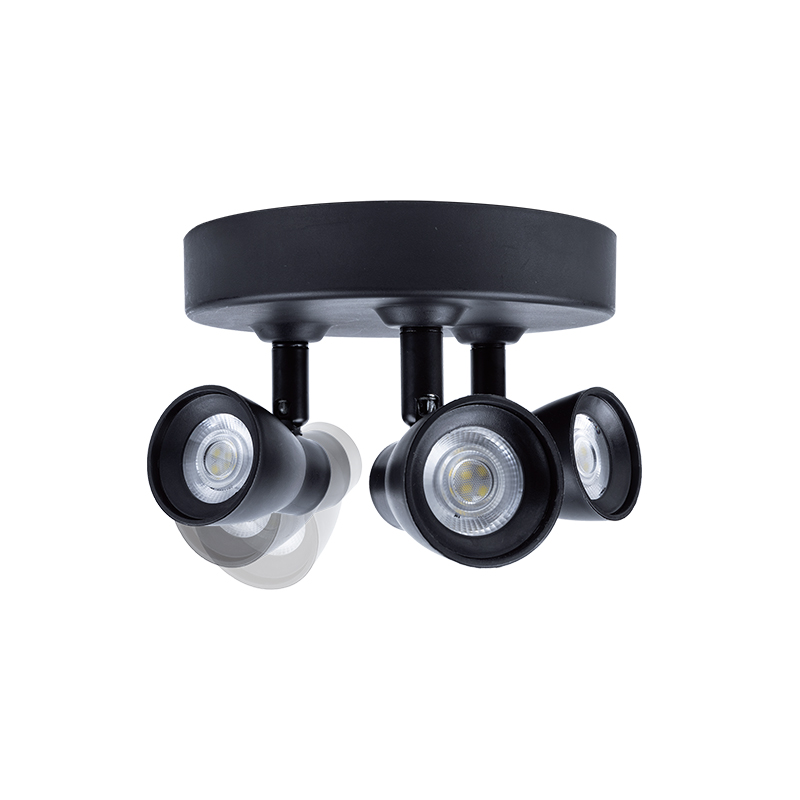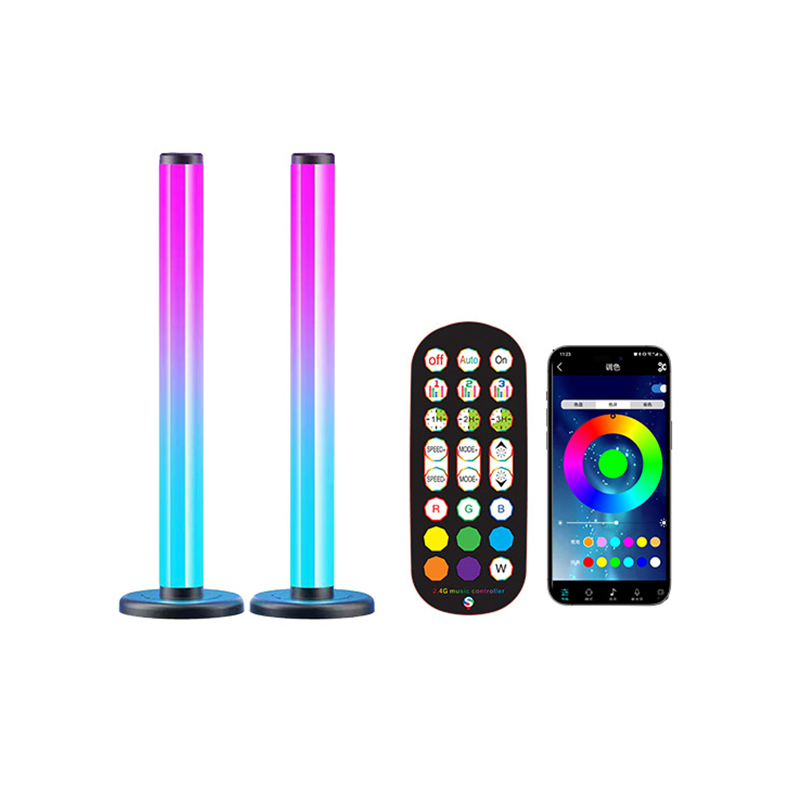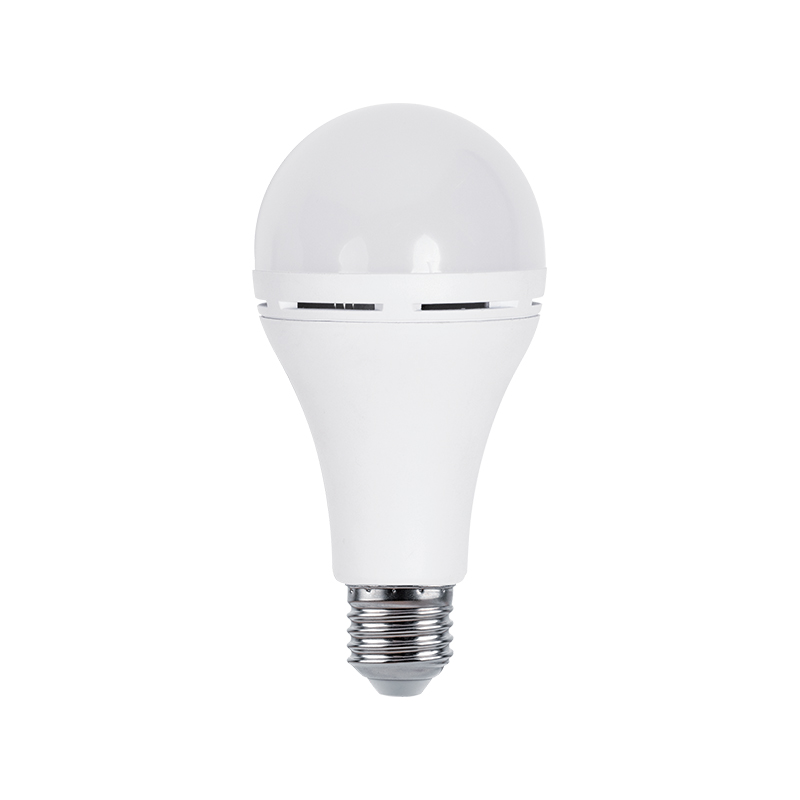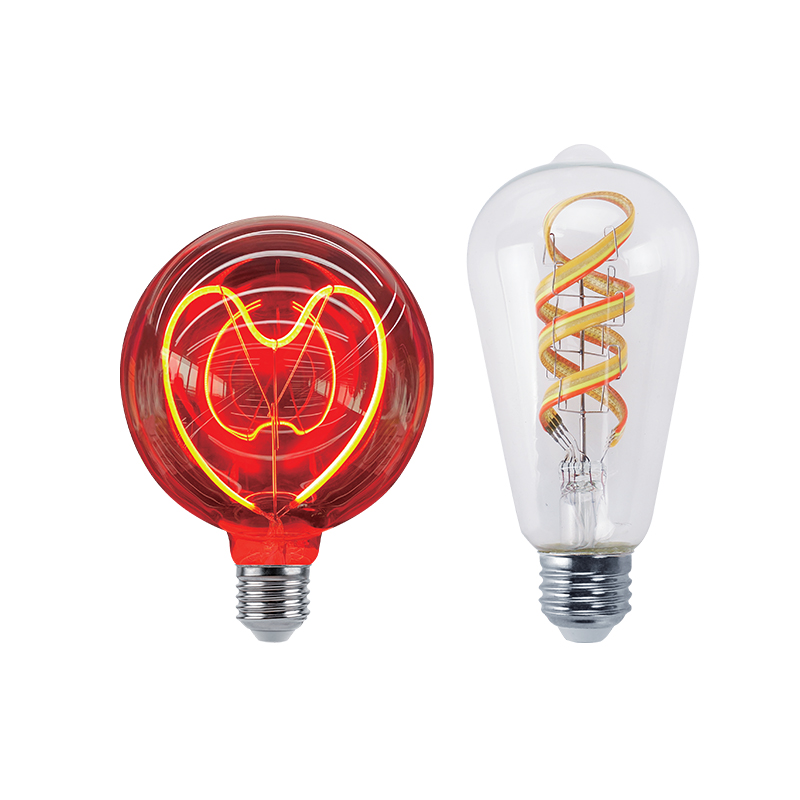We sincerely look forward to establishing a long-term development partnership with you with good quality and professional services.
一、Brightness and energy efficiency of 100W LED floodlight (tripod)
In the context of increasingly diverse modern lighting needs, LED floodlights have become the first choice for many scenarios due to their excellent performance. When it comes to occasions that require high-brightness lighting and have certain requirements for portability, 100W LED floodlights (tripod) have become the focus of attention. It not only has to meet the brightness requirements, but its energy efficiency performance is also directly related to the cost of use and environmental protection.
1.Brightness performance of 100W LED floodlight (tripod)
(I) Brightness measurement standards
Brightness is usually measured in lumens (lm). For a 100W LED floodlight (tripod), its actual output lumen value is the key indicator to judge the brightness. Generally speaking, high-quality 100W LED floodlights can output high lumen values and provide sufficient lighting for large areas. However, there can be significant differences in brightness between different brands and models, which is mainly affected by factors such as LED chip quality, optical design, and heat dissipation system.
As the core component of the light source, the quality of the LED chip directly determines the luminous efficiency and brightness. High-quality LED chips can convert electrical energy into light energy more efficiently, thereby outputting higher lumen values. For example, some 100W LED floodlights that use well-known brand LED chips can have a lumen value of more than 10,000lm, which can easily illuminate a small stadium or a large area of a construction site. The optical design determines the distribution and projection angle of the light. Reasonable optical design can make the light more concentrated or evenly distributed, thereby improving the lighting effect. Some 100W LED floodlights (tripods) with precise optical design can project light to a longer distance to meet the needs of long-distance lighting; while others focus on the uniformity of light and are suitable for scenes with high requirements for light uniformity, such as studios, exhibitions, etc.
The heat dissipation system is crucial to maintaining the normal operation and stable brightness output of LED chips. LED chips generate a lot of heat when working. If the heat cannot be dissipated in time, the chip temperature will rise, thereby reducing the luminous efficiency and shortening the service life. An efficient heat dissipation system, such as large-area heat dissipation fins and silent fans, can effectively dissipate heat and ensure that the LED chips work at a suitable temperature, thereby maintaining a stable brightness output.
(II) Brightness requirements and applicability in different scenarios
l Construction site: At construction sites, lighting requirements are usually more complex. During nighttime construction, large-area, high-brightness lighting is required to ensure the safety of construction workers and construction progress. With its high brightness, the 100W LED floodlight (tripod) can illuminate every corner of the construction site, allowing construction workers to clearly see the situation in the construction area and avoid safety accidents caused by insufficient light. Its portability also allows it to be easily moved to different construction areas according to changes in the construction progress to meet the lighting needs of different stages. For example, during the foundation construction stage, it is necessary to illuminate areas such as foundation pits and foundations. The 100W LED floodlight (tripod) can be placed in a suitable position to provide sufficient light; during the main structure construction stage, it can be moved to the interior of the floor to provide lighting for indoor construction.
l Outdoor activities: such as camping, outdoor concerts, sports events and other outdoor activities also have high requirements for lighting. When camping, 100W LED floodlight (tripod) can provide bright lighting for the camp, which is convenient for setting up tents, preparing food and other activities. Its high brightness can make the camp safer at night and avoid the intrusion of wild animals. For outdoor concerts and sports events, 100W LED floodlight (tripod) can provide enough brightness for the stage and competition venue, ensuring that the audience and participants can clearly see the performance and competition. Moreover, its portability allows it to be quickly installed and disassembled to meet the needs of different venues.
l Photography and videography: In the field of photography and videography, the quality and brightness of light are crucial. The 100W LED floodlight (tripod) can be used as an auxiliary light source to provide sufficient light for the shooting scene. When shooting portraits, it can illuminate the face of the person, eliminate shadows, and make the person clearer and more three-dimensional; when shooting landscapes, it can supplement the light and enhance the layering and color saturation of the picture. Its adjustable brightness function also allows photographers to flexibly adjust the intensity of light according to shooting needs to create different shooting effects.
2.Energy efficiency performance of 100W LED floodlight (tripod)
(I) Definition and measurement indicators of energy efficiency
Energy efficiency refers to the effective energy output that a product can provide while consuming a certain amount of electrical energy. For 100W LED floodlights (tripods), energy efficiency is usually measured in luminous efficacy (lm/W), which is the number of lumens that can be produced per watt of electrical energy. The higher the luminous efficacy, the more light energy the product can output while consuming the same amount of electrical energy, which means that its energy efficiency is higher. In addition to luminous efficacy, power factor is also one of the important indicators for measuring the energy efficiency of LED floodlights. The power factor reflects the efficiency of electrical energy utilization by electrical equipment. The higher the power factor, the more fully the equipment utilizes electrical energy and the less the loss of the power grid. Generally speaking, high-quality 100W LED floodlights (tripods) have high luminous efficacy and power factor, which can reduce power consumption while providing high-brightness lighting.
(II) Energy efficiency comparison with traditional lighting fixtures
Compared with traditional lighting fixtures such as incandescent lamps, halogen lamps and high pressure sodium lamps, 100W LED floodlight (tripod) has significant advantages in energy efficiency. Incandescent lamps were one of the first widely used lighting fixtures, but they were extremely energy inefficient, with most of the electrical energy converted into heat rather than light. For example, a 100W incandescent lamp usually has a luminous efficacy of only 10 - 15lm/W, that is, it consumes 100W of electrical energy and can only produce a luminous flux of 1000 - 1500lm. The luminous efficiency of a 100W LED floodlight can reach 80 - 120lm/W, or even higher. Under the same power, the luminous flux of an LED floodlight is several times that of an incandescent lamp.
Although halogen lamps have improved in brightness and color temperature, their energy efficiency is still not high, and their luminous efficiency is generally around 20-30lm/W. High-pressure sodium lamps are a type of lamp commonly used for road lighting. Their luminous efficiency is relatively high, up to 80-100lm/W, but they have poor color rendering and a long startup time, making them unsuitable for occasions that require frequent switching. In contrast, 100W LED floodlights (tripods) not only have high luminous efficiency, but also have good color rendering, can truly restore the color of objects, and start quickly, reaching full brightness in an instant, making them very suitable for use in various scenarios.
(III) Analysis of energy-saving effect and use cost
The high energy efficiency of the 100W LED floodlight (tripod) brings significant energy saving effect and lower use cost. Take a scenario where the battery is used for 8 hours a day and 300 days a year as an example, assuming that the electricity fee is 0.8 yuan per kWh. A 100W incandescent lamp consumes 100W × 8h × 300 = 240 kWh of electricity per year, and the electricity bill is 240 kWh × 0.8 yuan/kWh = 192 yuan. A 100W LED floodlight with a luminous efficacy of 100lm/W may only require about 20W of actual power to provide the same brightness due to its high energy efficiency (assuming that in order to achieve the same brightness as a 100W incandescent lamp, the actual power of the LED floodlight is 20W). The annual power consumption is 20W × 8h × 300 = 48 degrees, and the electricity bill is 48 degrees × 0.8 yuan/degree = 38.4 yuan. By comparison, it can be seen that using a 100W LED floodlight (tripod) can save a lot of electricity expenses every year.
Besides the cost of electricity, the lifespan of 100W LED floodlight (tripod) is also relatively long. Generally speaking, the service life of LED can reach more than 50,000 hours, while the service life of incandescent lamp is usually only about 1,000 hours, and the service life of halogen lamp is only 2,000-3,000 hours. This means that within the same period of use, LED floodlights do not require frequent bulb replacement, reducing replacement costs and maintenance workload.
To sum up, the 100W LED Flood Light (Tripod) has excellent performance in terms of brightness and energy efficiency. Its high brightness can meet the lighting needs of various scenes, while its high energy efficiency brings significant energy saving effects and lower use costs. When choosing an LED floodlight (tripod), fully considering its brightness and energy efficiency performance can bring users a better user experience and economic benefits.
二、Flexible adjustment: practicality and stability of tripod design
When choosing an LED floodlight that is both bright and portable, the design of the tripod plays a vital role. It is not only related to the flexibility of the lamp, but also directly affects the stability of the lamp during use. An excellent LED floodlight (tripod) should have a flexible adjustment function to adapt to different usage scenarios and needs, while also ensuring good stability to ensure that the lamp will not shake or tip over during use.
1.Practicality of tripod design
(I)Height adjustment function
l Adjustment method: The height adjustment of the tripod is one of its most basic and important functions. At present, the common height adjustment methods of LED floodlights (tripods) on the market are mainly knob type, lever type and quick telescopic type. The knob type height adjustment is achieved by rotating the knob to tighten or loosen the telescopic tube of the tripod to adjust the height. The advantage of this adjustment method is that the adjustment accuracy is high and it can be accurately adjusted to the required height according to actual needs; the disadvantage is that the adjustment speed is relatively slow, especially when the height needs to be adjusted quickly, it is not very convenient to operate. The lever type height adjustment is to lock or loosen the telescopic tube by pulling the lever to achieve quick height adjustment. Its advantages are simple and fast operation, and the tripod can be adjusted to the appropriate height in a short time; but the disadvantage is that the adjustment accuracy is relatively low and it may not be accurately adjusted to a specific height. The quick telescopic height adjustment combines the advantages of the knob type and the lever type. Through its special structural design, it can not only achieve fast height adjustment, but also ensure a certain adjustment accuracy. For example, some high-end LED floodlights (tripods) use a quick telescopic height adjustment system, which allows users to quickly extend the tripod to the desired height with just a press of a button, and then make precise adjustments using the fine-tuning knob.
l Applicable scenarios: Different usage scenarios have different requirements for the height of the tripod. On construction sites, due to the different terrain and working heights in the construction area, the tripod needs to be able to adjust its height within a large range. For example, when working at high altitude, the LED floodlight (tripod) may need to be adjusted to a higher position to illuminate the high construction area; when working on the ground, the tripod can be lowered to make the light shine more concentratedly on the work surface. In the field of photography and videography, the height adjustment function is also very important. Photographers can flexibly adjust the height of the tripod according to the height of the subject and the shooting angle requirements to obtain the best shooting effect. For example, when shooting portraits, in order to obtain a suitable viewing angle, the tripod may need to be adjusted to the height of the model's eyes; when shooting landscapes, the tripod can be adjusted to different heights according to the composition requirements to capture different picture effects. In outdoor activities, such as camping, outdoor concerts, etc., the height adjustment function of the tripod is also indispensable. When camping, users can adjust the LED floodlight (tripod) to a suitable height according to the height of the tent and the surrounding environment to provide comfortable lighting for the campsite; in outdoor concerts, in order to ensure that both the stage and the audience area are well illuminated, the tripod needs to be adjusted to an appropriate height so that the light can cover the entire activity area.
(II)Angle adjustment function
1. Horizontal rotation angle: The horizontal rotation angle adjustment function of the tripod allows the LED floodlight to rotate 360 degrees in the horizontal direction. This function is of great practicality in many scenarios. On a construction site, when the construction area changes, the light can be quickly turned to the new construction area by rotating the tripod horizontally, without having to re-move the tripod, which improves work efficiency. In photography and videography, the horizontal rotation angle adjustment function can help photographers adjust the direction of the light to meet different shooting needs. For example, when shooting dynamic objects, the photographer can rotate the tripod horizontally so that the light always follows the subject, ensuring that it is always in a good lighting environment. The horizontal rotation angle adjustment function is also very useful in outdoor activities. For example, at an outdoor concert, when the performance area on the stage changes, the tripod can be rotated horizontally to adjust the light to the new performance area in time to ensure that the audience can see the performance clearly.
2. Vertical pitch angle: In addition to the horizontal rotation angle, the vertical pitch angle adjustment function of the tripod is equally important. It allows the LED floodlight to be tilted vertically to a certain angle, usually between 0 and 180 degrees. On construction sites, the vertical pitch angle adjustment function can adjust the angle of light according to the height and shape of the construction area, so that the light can better cover the area that needs to be illuminated. For example, when digging a foundation pit, the light can be tilted downward to illuminate the bottom of the foundation pit; when building a high-rise building, the light can be tilted upward to illuminate the construction site at a high altitude. In photography and videography, the vertical pitch angle adjustment function can be used to adjust the incident angle of light to create different light and shadow effects. For example, tilting the light downward can produce a soft top light effect to highlight the facial features of the person; tilting the light upward can produce a unique backlight effect to increase the layering and artistic sense of the picture. In outdoor activities, the vertical pitch angle adjustment function can adjust the angle of light according to the needs and environment of the activity. For example, when camping, the lights can be tilted downward to illuminate the interior of the camp; while at an outdoor concert, the lights can be tilted upward to illuminate the decorations and background above the stage to create a better performance atmosphere.
(III) Folding and portable design
1. Folding method: In order to improve the portability of LED floodlights (tripods), tripods usually adopt a folding design. Common folding methods include central axis folding, joint folding and mixed folding. Central axis folding is to fold the central axis of the tripod so that the tripod can be stored more compactly when not in use. The advantage of this folding method is that the structure is simple and storage is convenient; the disadvantage is that the volume after folding is relatively large and it is not suitable for long-term carrying. Joint folding is to set a folding structure at each joint of the tripod so that the tripod can be folded at multiple angles, greatly reducing the storage volume. The advantage of this folding method is that the volume is small after storage and easy to carry; but the disadvantage is that the folding and unfolding operations are relatively complicated. Mixed folding combines the advantages of central axis folding and joint folding, which not only ensures a certain degree of portability, but also makes the operation relatively simple. For example, some high-end LED floodlights (tripods) adopt a mixed folding design. Users only need to operate in a few simple steps to fold the tripod into a small shape, which is convenient to carry in a backpack or suitcase.
2. Portability advantage: The folding and portable design of the tripod allows the LED floodlight (tripod) to adapt to a variety of different usage scenarios. In outdoor adventure activities, users need to carry light equipment. The folded LED floodlight (tripod) is small in size and light in weight, and can be easily put into a backpack without bringing too much burden to the user. On construction sites, since the construction site may be constantly changing, the portable LED floodlight (tripod) can be easily moved between different construction areas to meet the lighting needs of different stages. In the field of photography and videography, photographers often need to run between different shooting locations. The folding and portable design of the tripod allows them to carry lights more easily and improve work efficiency.
3.Tripod design for stability
(I)Influence of material and structure on stability
l Material selection: The material of the tripod is one of the important factors affecting its stability. Common tripod materials include aluminum alloy, carbon fiber and plastic. Aluminum alloy has the advantages of light weight, high strength and corrosion resistance. It is one of the most widely used materials for LED floodlights (tripods) on the market. It can reduce the weight of the tripod while ensuring a certain strength, making it easy to carry and use. Carbon fiber material has higher strength and lighter weight, but its price is relatively high. It is usually used in high-end LED floodlight (tripod) products. Carbon fiber tripods are not only stable, but also have good impact resistance and can remain stable in harsh environments. Plastic tripods are relatively cheap, but have poor strength and stability. They are generally suitable for some low-end products that do not require high stability. When choosing an LED floodlight (tripod), you should choose a tripod of suitable material according to actual use needs and budget to ensure its stability.
l Structural design: In addition to the material, the structural design of the tripod also has an important impact on its stability. The structure of a tripod usually includes three legs, a central axis and connecting parts. Reasonable structural design can keep the tripod stable when bearing the weight of the lamp and external forces. For example, some tripods adopt a triangular structural design, which uses the stability principle of the triangle to make the tripod more stable during use. At the same time, the diameter and wall thickness of the tripod's leg tubes will also affect its stability. A thicker leg tube diameter and thicker wall thickness can provide stronger support and improve the stability of the tripod. In addition, the design of the tripod's central axis is also critical. The central axis should have good load-bearing capacity and stability to ensure that the lamp will not shake when adjusting the height and angle.
(II)Anti-slip and fixing devices
Spikes and pads:In order to enhance the stability of the tripod on different ground surfaces, spikes or pads are usually installed on the feet of the tripod. Spikes are suitable for soft ground surfaces, such as grass, beaches, etc. When the tripod is placed on these ground surfaces, the spikes can be inserted into the ground to fix the tripod more firmly to the ground to prevent it from sliding or tipping over. Pads are suitable for hard ground surfaces, such as cement floors, tile floors, etc. Pads are generally made of rubber or silicone and have good anti-slip properties. They can increase the friction between the tripod and the ground to prevent the tripod from moving during use. Some high-end LED floodlights (tripods) are also equipped with adjustable spikes and pads. Users can choose to use spikes or pads according to different ground conditions, or adjust the spikes and pads to obtain optimal stability.
Counterweights and pull ropes:In some special scenarios, such as outdoor environments with strong winds, the stability of the tripod may not be guaranteed by relying solely on the spikes and foot pads. At this time, counterweights and pull ropes can be used to further enhance stability. The counterweight can be a sandbag, iron block or other heavy object, which is hung on the central axis or legs of the tripod to increase the weight of the tripod and make it more stable. The pull rope can connect the tripod to the surrounding fixed objects (such as trees, railings, etc.), and use tension to fix the position of the tripod to prevent it from being blown down by the wind. When using counterweights and pull ropes, you need to pay attention to the reasonable arrangement of the weight of the counterweight and the tension of the pull rope to avoid damage to the tripod.
(III)Importance of stability for different usage scenarios
Construction site:On construction sites, the stability of LED floodlights (tripods) is crucial. The construction environment is usually complex, with uneven ground and various construction equipment and personnel activities. If the tripod is not stable enough, the lamp may fall over, which will not only damage the lamp, but also threaten the safety of construction workers. A stable tripod can ensure that the light always remains in the right position and angle, providing continuous and reliable lighting for construction, ensuring construction progress and safety.
Photography and videography:During the process of photography and videography, even the slightest shake may cause the picture to be blurred and affect the shooting effect. A stable tripod can ensure that the LED floodlight maintains a fixed position and angle during the shooting process, providing stable light for shooting. Especially in shooting scenes that require high stability, such as long exposure and macro shooting, the stability of the tripod plays a decisive role. Only by ensuring the stability of the tripod can photographers and videographers shoot high-quality works.
Outdoor activities:In outdoor activities, such as outdoor concerts and sports events, the on-site environment is often complex, with large personnel flow and may be affected by natural factors such as wind. Stable LED floodlights (tripods) can ensure that the light always covers the area that needs to be illuminated, and will not be offset or tipped over due to interference from external factors. This can not only provide good lighting effects for the event, but also avoid safety accidents caused by unstable lighting, ensuring the smooth progress of the event.
三、Application scenarios and advantages of flicker-free warm white light sources
As lighting technology continues to innovate, the quality and characteristics of light sources are receiving more and more attention. Flicker-free warm white light sources have demonstrated incomparable advantages in many application scenarios due to their unique performance. This light source can not only provide a comfortable and healthy lighting environment, but also meet the special needs of light in different scenarios.
1.Basic characteristics of flicker-free warm white light sources
The key to flicker-free warm white light sources is their stable light output. Traditional light sources, such as some fluorescent lamps and inferior LED lamps, produce flickering phenomena that are difficult to detect with the naked eye but potentially harmful to the human body due to unstable current. Flicker-free warm white light sources use advanced driving technology and high-quality electronic components to ensure stable current and constant light output, avoiding the negative effects of flickering.
The color temperature of warm white light sources is usually between 2700K and 3500K. This color temperature presents a warm and soft tone, close to the dusk light in natural light, giving people a warm and comfortable feeling. Compared with cold white light (the color temperature is usually higher than 5000K), warm white light is softer and does not produce a glaring feeling; compared with pure yellow light, warm white light has better color rendering and can restore the color of objects more realistically.
4.Application scenarios of flicker-free warm white light source
(I) Family living scene
l Living room: The living room is the main place for family activities, where family members relax, entertain, and receive guests. Flicker-free warm white light can create a warm and comfortable atmosphere for the living room, allowing people to feel relaxed and comfortable when they return home after a busy day. When watching TV or movies, stable flicker-free light can reduce eye fatigue, and long-term viewing will not cause visual discomfort. At the same time, the warm white tone can enhance the style of the living room, making the space appear warmer and more intimate, and enhancing the cohesion of the family.
l Bedroom: The bedroom is a space for rest and sleep, and the requirements for light are more focused on comfort and softness. Flicker-free warm white light can provide soft, non-glaring light, and will not affect the quality of sleep due to strong light stimulation when reading before bedtime or getting up at night. Its warm tones help relax the body and mind, relieve stress, and make it easier for people to fall asleep. In addition, for families with children, flicker-free warm white light can effectively protect children's eyesight and avoid the potential harm of stroboscopic light to children's eye development.
l Restaurant: Using flicker-free warm white light in the restaurant can enhance the color and texture of food, improve the appetite and atmosphere of dining. The warm light sprinkled on the table will make the food look more tempting, and at the same time, it can create a warm and romantic dining environment and enhance the communication and emotions between family members. Whether it is a family dinner or a gathering of friends, flicker-free warm white light can add a unique charm to the restaurant.
(II) Commercial places
l Hotels: The hotel lobby, guest rooms, restaurants and other areas need to create a comfortable and high-end atmosphere. The application of flicker-free warm white light sources in hotels can provide guests with a warm and comfortable stay experience. In the lobby, warm white light can make guests feel at home; in the guest rooms, soft light helps guests relax and enjoy a comfortable sleep; in the restaurant, warm light can enhance the dining atmosphere and increase guest satisfaction. At the same time, the flicker-free feature can also protect guests' eyesight and improve the hotel's service quality.
l Cafes and bars: Cafes and bars focus on creating a unique atmosphere and mood. Flicker-free warm white light sources can add warm, soft light to these places, creating a comfortable and relaxing environment. In cafes, warm light allows customers to calm down and enjoy the aroma of coffee and the fun of reading; in bars, warm white light can create a romantic and mysterious atmosphere to attract customers to stop. In addition, the flicker-free feature can also ensure that customers will not experience visual fatigue when staying for a long time, improving their consumption experience.
l Clothing stores: Clothing stores need to display the color and texture of clothing to attract customers' desire to buy. Flicker-free warm white light sources have good color rendering properties and can truly restore the color of clothing, allowing customers to see the most authentic appearance of clothing. Warm light can also make clothing look softer and more comfortable, and enhance the quality of clothing. At the same time, flicker-free light can reduce customers' visual fatigue when choosing clothing, making customers more willing to stay in the store and try on clothes, thereby increasing store sales.
(III) Office and study scenarios
l Office: In the office, employees need to face computer screens and documents for a long time. A good lighting environment is essential to improve work efficiency and protect eyesight. Flicker-free warm white light sources can provide stable and soft light to reduce eye fatigue and dryness. Warm tones can relieve work pressure, create a comfortable and relaxed working atmosphere, and improve employees' work enthusiasm and creativity. At the same time, the flicker-free feature can also ensure that employees maintain good visual conditions when working for long periods of time, reducing the risk of vision loss.
l School classrooms: Students spend most of their time in classrooms. The quality of classroom lighting directly affects students' vision and learning outcomes. Flicker-free warm white light sources can provide sufficient and stable light for classrooms, avoiding damage to students' eyes caused by flickering. Its good color rendering allows students to see the words on the blackboard and the contents of books more clearly, improving learning efficiency. Warm light can also create a comfortable and warm learning environment, relieve students' learning pressure, and stimulate their interest in learning.
5.Advantages of Flicker-free Warm White Light Source
(I) Protect your eyesight
One of the biggest advantages of flicker-free warm white light sources is that they protect eyesight. Flicker can cause discomfort such as eye fatigue, dryness, soreness, and swelling. Long-term exposure to flickering environments may also cause eye diseases such as myopia and dry eyes. Flicker-free warm white light sources avoid the stimulation of flicker on the eyes through stable light output, reducing eye fatigue and damage. Its soft light will not cause strong stimulation to the eyes, and can effectively protect the health of the eyes. It is especially suitable for people who use their eyes for a long time, such as students and office workers.
(II) Create a comfortable atmosphere
The warm tones of warm white light sources can create a comfortable and cozy atmosphere, making people feel relaxed and happy psychologically. Whether it is a home residence, a commercial place or an office study scene, the flicker-free warm white light source can enhance the comfort and atmosphere of the space through its unique light tone. In the home, it can enhance the warmth of the home; in commercial places, it can attract customers and enhance the consumer experience; in office study scenes, it can relieve stress and improve work and study efficiency.
(III) Good color rendering
Flicker-free warm white light has good color rendering and can truly restore the color of objects. This advantage is particularly important in the fields of commercial display, photography and videography. In commercial display, accurate color reproduction can make the goods look more real and attractive, attracting customers' desire to buy; in photography and videography, good color rendering can make the pictures more vivid and realistic, improving the quality of the work.
(IV) Energy conservation and environmental protection
Flicker-free warm white light sources usually use LED technology, which is energy-efficient. Compared with traditional incandescent lamps and fluorescent lamps, LED lamps can provide higher brightness and longer service life while consuming the same amount of electricity. This can not only reduce energy consumption and electricity bills, but also reduce the frequency of bulb replacement and maintenance costs. At the same time, LED lamps do not contain harmful substances such as mercury, are more environmentally friendly, and are in line with the development trend of energy conservation and environmental protection.

 English
English Español
Español Deutsch
Deutsch